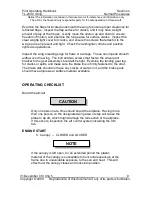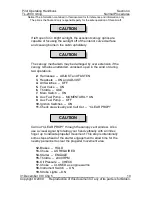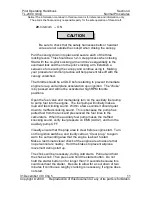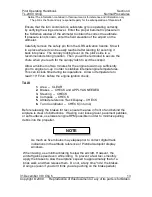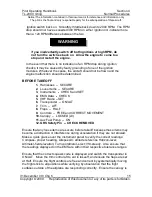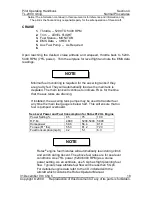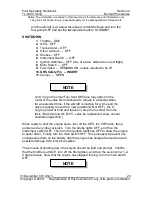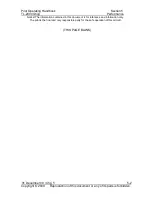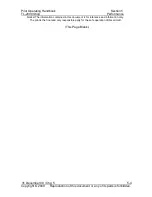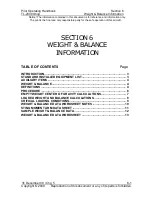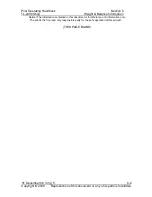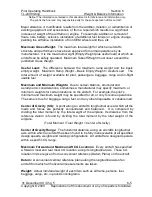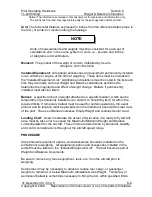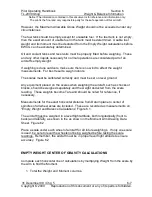
Pilot Operating Handbook
Section 4
TL-2000
Sting
Normal Procedures
Notice! The information contained in this document is for reference and information only.
The pilot is the final and only responsible party for the safe operation of this aircraft.
31 December 09 / Chg 5_____________________________________________22
Copyright © 2009 Reproduction of this document or any of its parts is forbidden.
rate. Allow the airplane to settle to the runway. Do not allow the nose wheel to
touch down on landing. This could result in the nose wheel digging into the soft
runway and loss of airplane control. Continue the landing roll, and as the
airplane decelerates, allow the nose wheel to gently settle to the ground. Use as
little braking as necessary throughout the entire landing and taxi.
BALKED LANDING (
GO-AROUND
) OR TOUCH-AND-GO LANDING
1.
Throttle -- FULL
Airborne, after establishing a positive rate, stabilized, climb
2.
Flaps -- SET TO HALF
3.
Airspeed -- 50 KTS, V
X
4.
Flaps -- RETRACT WHEN CLEAR OF OBSTACLES
5.
Airspeed -- 55 KTS, V
Y
6.
If a go-around is executed, full power should be applied, a climb at V
X
should be
established, and Half flaps should be used. Completely retract the flaps after
any obstacles are cleared and maintain a climb at V
Y
until
reestablishing normal
climb procedures.
Establish full throttle on the runway prior to flap change during a
touch-and-go landing. The aircraft will accelerate, become airborne,
and climb until half flaps can be set and the drag from full flaps is
eliminated. Do NOT use (waste) runway ahead to roll out while
resetting the flaps on the runway. Establish full power to begin
aircraft acceleration and then set Half flaps after the initial climb has
been established and the aircraft is stabilized in the climb.
AFTER LANDING
AND OFF THE RUNWAY
1.
Flaps -- UP
2.
Aux Fuel Pump -- OFF
3.
Transponder -- STANDBY
There are NO procedures to do on the runway during takeoff or
landing while moving. After exiting the runway, clear of the hold line
NOTE


